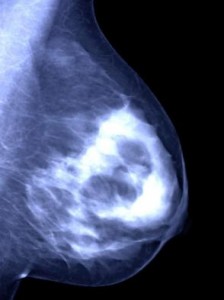Recent studies in breast cancer treatment have shown the effectiveness of a new method. This revolutionary new practice named “targeted intraoperative radiotherapy” involves one simple session of radiation therapy, rather than the usual 6 1/2 weeks required by traditional breast cancer radiation therapy. Research has shown that the therapy is effective, but returning cancer in the future is still a possibility with this method.
This treatment is completed during surgery. A recent study conducted involved 45 women with breast cancer; half received the targeting radiation during their breast-conserving surgery, while the other half received traditional radiation for weeks after the surgery. Results seemed very promising; about 86% of those who received the targeting radiation did not require further treatments after the procedure.
There is a special device which is used to target the breast cancer during surgery, it then subsequently delivers the one-time radiation exposure for approximately 30 minutes. One-time targeting radiation therapy is recommended by oncology specialists for women who have a small breast tumor with a very clear location. Because the radiation device is designed to seek out the cancer’s location specifically, this is one important aspect to keep in mind.

